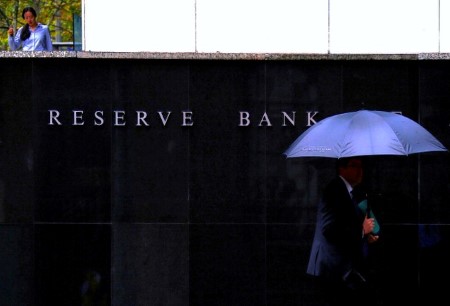




Philippines Trade Update: Trade trajectories trend along
 DOWNLOAD
DOWNLOAD

Policy Rate Updates: Double cut finale
 DOWNLOAD
DOWNLOAD

Monthly Economic Update: One for the road
 DOWNLOAD
DOWNLOAD


Guarding against disinflation complacency

Investors are no doubt relieved that disinflationary pressures seem to be spreading across many parts of the world, but there were a few warnings on Tuesday against complacency that they might keep in mind going into Wednesday.
Australia’s central bank struck a hawkish tone in its policy statement, some US Federal Reserve officials expressed similar wariness over inflation, and global oil prices extended their recent climb to the highest in seven weeks.
That wasn’t enough to kill the general bullishness pervading world markets – Asian stocks posted solid gains, Nvidia became the world’s most valuable publicly traded company and the S&P 500 and Nasdaq hit new highs – but it’s a reminder that markets are not a one-way bet.
Momentum cooled also in part to disappointing US retail sales figures that suggest growth in the world’s largest economy is slowing – the dollar and Wall Street barely budged, and Treasury yields fell.
Asian markets might struggle for direction on Wednesday. Trade figures from Japan and Indonesia, current account data from New Zealand, and Japan’s tankan business surveys are highlights on the regional economic calendar.
The New Zealand dollar could take its cue from the Reserve Bank of New Zealand’s chief economist Paul Conway, who will deliver a speech on inflation.
Swaps markets are pricing in 35 basis points of easing from the RBNZ this year and a further 90 bps to 100 bps next year. That’s significantly more than the Reserve Bank of Australia, which is only seen cutting rates 50 bps by the end of next year.
The Aussie dollar was one of the best-performing G10 currencies on Tuesday after the RBA left its cash rate on hold at 4.35%, as expected, but emphasized the need to be vigilant on inflation.
Japan’s yen finds back in and around the ‘intervention zone’ of 158.00 per dollar to 160.00 per dollar, where Tokyo intervened on two occasions recently to prevent it from weakening any further.
The Bank of Japan will be more wary than most about the inflationary effects of the weak exchange rate and oil, which is up more than 10% in the last two weeks.
Japanese lender Norinchukin Bank, meanwhile, will sell more than USD 63 billion of its holdings of US and European government bonds during the year ending March 2025, Nikkei reported.
Norinchukin will do this as part of the bank’s efforts to “drastically change its portfolio management,” Nikkei quoted the bank’s CEO as saying.
It will be interesting to see what effect, if any, this has on the bonds being sold and the yen. Japan is the biggest overseas holder of US Treasuries and the largest creditor nation in the world – repatriating a small part of these holdings could move world markets.
Here are key developments that could provide more direction to markets on Wednesday:
– Japan trade (May)
– Japan tankan surveys (June)
– RBNZ’s Conway speaks
(Reporting by Jamie McGeever; editing by Josie Kao)
This article originally appeared on reuters.com





 By Reuters
By Reuters